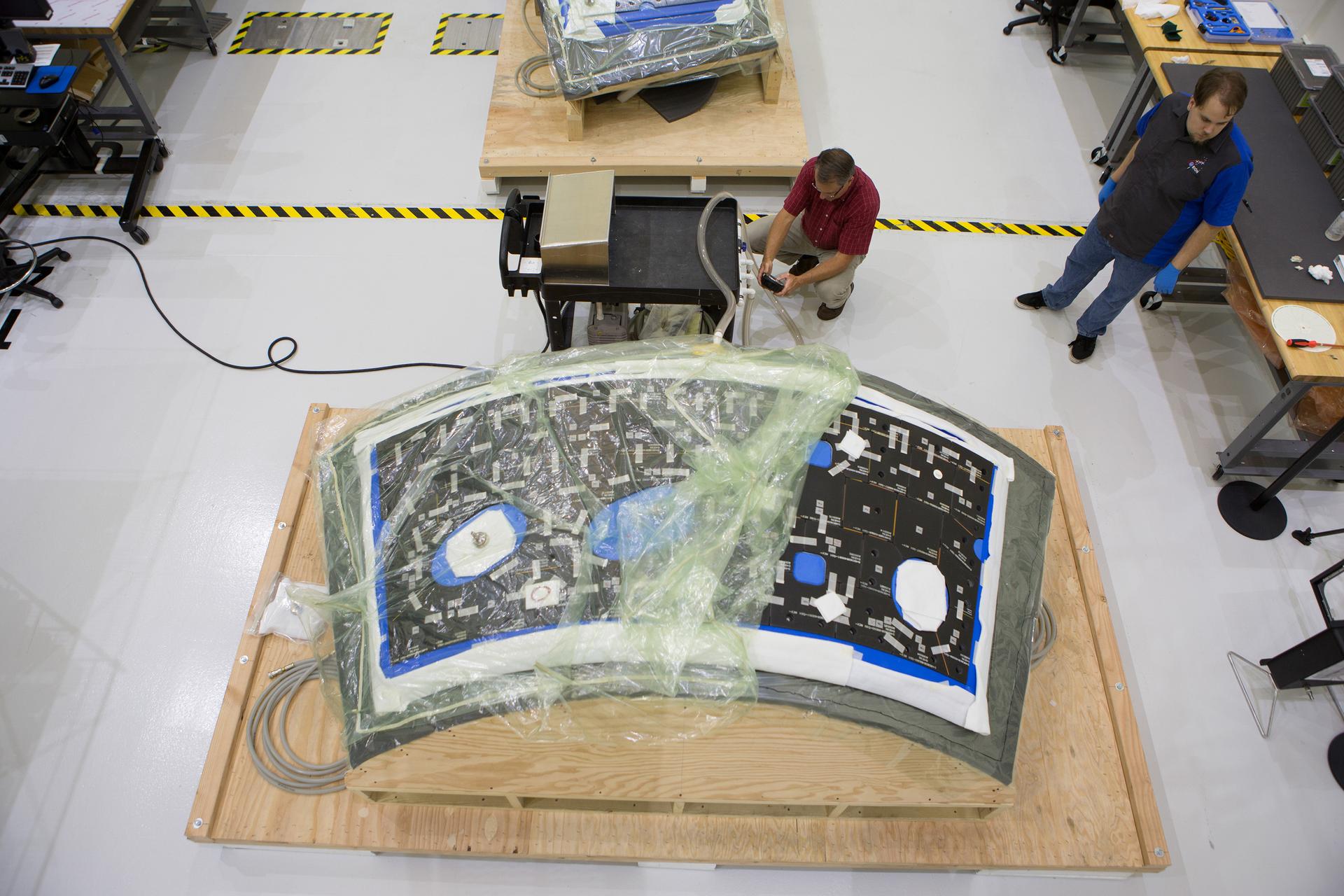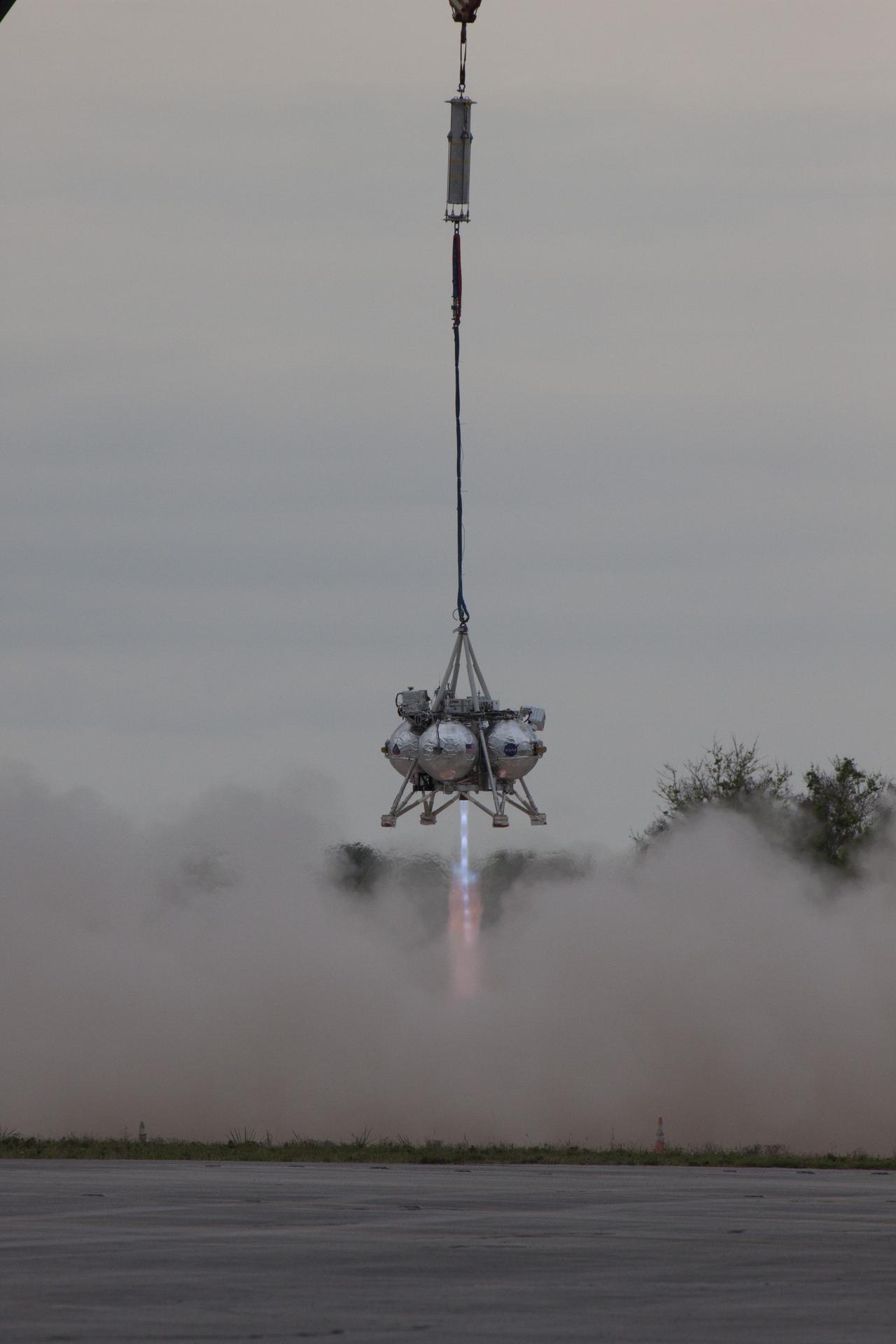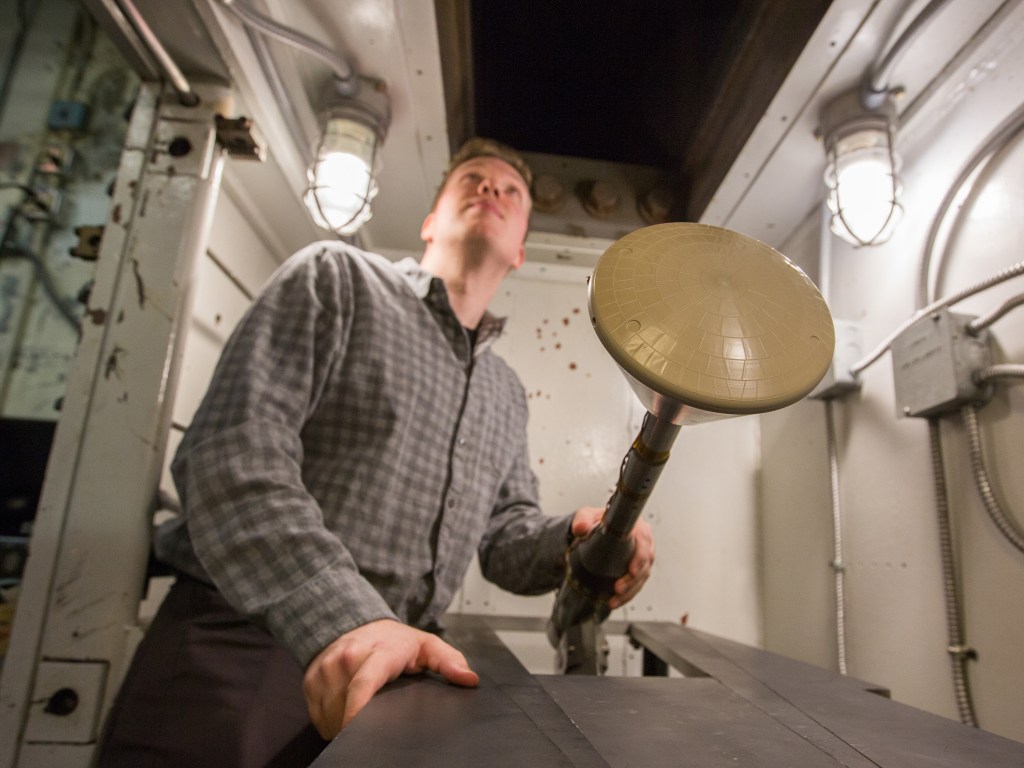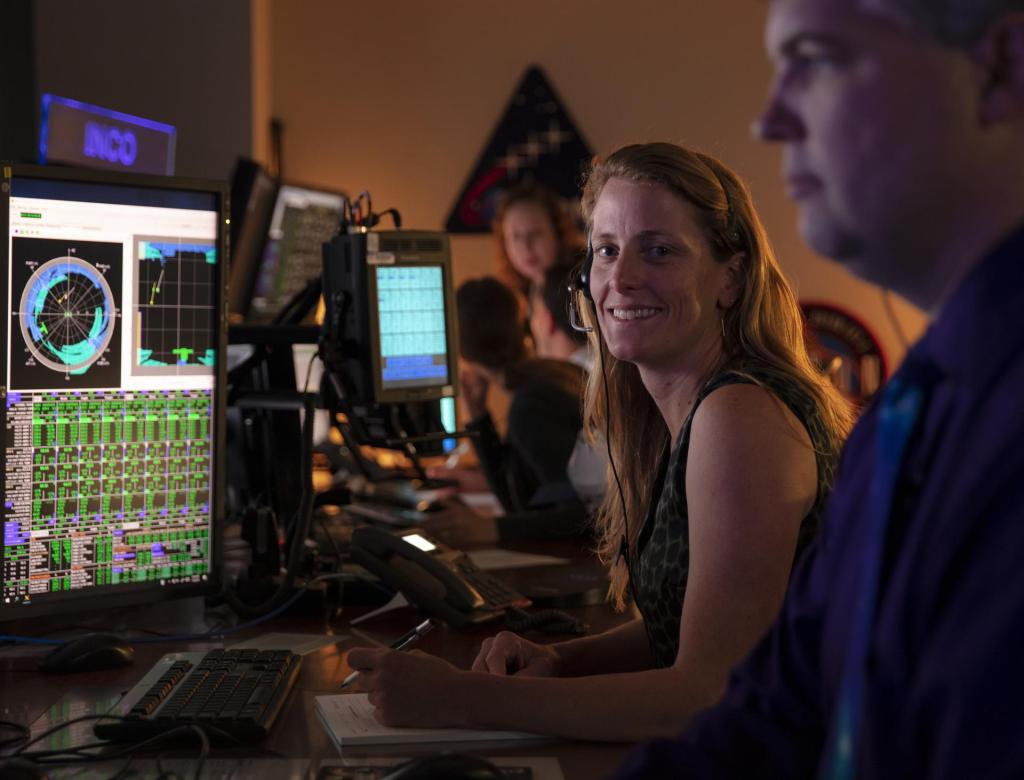Entry, Descent & Landing Subsystems

Introduction
A fundamental aspect to human spaceflight is returning our crew safely. Energy dissipation in a short amount of time, high entry velocities, composition of the atmosphere, and hitting the target encompass the challenges of planning for entry, descent and landing (EDL) of spacecraft. Johnson Space Center (JSC) provides a combination of ground test, analytical and flight test capabilities needed to develop EDL systems.
JSC’s services encompass a broad spectrum of activities related to space exploration and vehicle development. For Precision Landing & Hazard Avoidance (PL&HA) technologies, JSC is developing and testing sensors, algorithms and avionics to sufficient maturity to infuse on future lander vehicles. JSC’s facilities conduct thermal protection systems materials testing and screening. Our computational resources are dedicated to studying fluid dynamics, aerodynamics, and aerothermodynamics of spacecraft, covering aerodynamic performance, loads, and Computational Fluid Dynamics (CFD) simulations. These simulations include those for ascent heating, pressure decay, reentry heating, and pressure. Our services extend to flight phase development, involving departure and arrival window analysis, attitude pointing, and parachute/parafoil dynamics assessments. Real-time simulation of closed-loop lander systems and design limit load testing, integrated launch abort, and drop testing of parachute systems further contribute to comprehensive support in advancing space exploration EDL technologies.
Welcoming innovation and collaboration, the Johnson Space Center invites external collaborators to leverage our expertise. In unison, we foster a shared commitment to pushing the boundaries of human spaceflight. Explore the capabilities detailed below and be part of the exhilarating journey into space exploration as we lead the way at the cutting edge of discovery.
Systems & Integration
Entry, Descent & Landing Systems
Overview | NASA JSC provides a combination of ground test, analytical and flight test capabilities needed to develop entry, descent, and landing (EDL) vehicle capabilities.
Details | NASA JSC has expertise and capabilities related to Precision Landing & Hazard Avoidance (PL&HA), reentry hypersonics, EDL GN&C systems, and entry trajectory design. A combination of ground test, analysis, and flight test capabilities are used to develop these EDL systems.
Parachute Systems
Overview | NASA JSC provides expertise in human-rated parachute systems.
Details | NASA JSC provides expertise in human-rated parachute systems. This includes design limit loads, integrated launch abort and drop testing of parachute systems. JSC has access to a remote facility at the United States Army Yuma Proving Ground for air delivery testing of parachute systems. This facility provides the capability to perform integrated testing of parachute systems.
Guidance, Navigation and Control
Advanced Guidance & Targeting Algorithm Development
Overview | NASA JSC has expertise and simulation capabilities related to the design, development, and analysis of advanced guidance and targeting algorithms for all flight phases.
Details | NASA JSC has implemented and continues to pursue breakthrough guidance methods to enable robust onboard algorithms for a variety of flight phases. Development and testing spans first principles formulation, simulation analyses, and flight testing. Advanced algorithms include convex optimization and numerical predictor-corrector methods, which are being implemented for their robustness and adaptability to the uncertainty in atmospheric entry flight profiles. Additionally, NASA JSC has considerable expertise related to on-orbit guidance and targeting algorithms such as two-level targeting and auto burn planning.
Trajectory Design/Special Analysis
Overview | Flight Operations Directorate (FOD) Flight Dynamics enables the execution of dynamic spacecraft operations for safe and successful human spaceflight missions.
Details |
- Flight dynamics expertise provided across multiple programs and vehicles, always incorporating the crew perspective
- Development of launch windows, the ascent profile, ascent abort mode boundaries and representative abort trajectories
- Trajectories and impact predictions for launch vehicle stages and orbital insertion targets
- Deorbit opportunities, deorbit maneuvers, crew module to system module separation maneuvers and impact predictions
- Entry interface targets and entry corridors, and entry profiles for targeted landing sites
Astrodynamics, Mission Design, and Integrated Vehicle Performance
Overview | NASA JSC analyzes and designs optimal spacecraft orbits and trajectories for human spaceflight missions.
Details | NASA JSC provides design analysis and evaluation of mission concepts, vehicle flight performance capabilities and requirements, and preliminary guidance, navigation, and control (GN&C) requirements. This includes flight envelopes and trajectories for ascent, targeting and profiles for on-orbit rendezvous, interplanetary trajectories, and entry through landing trajectory designs. JSC can optimize end-to-end trajectories and vehicle performance for Low Earth Orbit, cislunar, and planetary missions.
Six-Degrees-of-Freedom (6-DOF) Tendon Actuated Robot
Overview | The Safe and Precise Landing – Integrated Capabilities Evolution (SPLICE) project has developed a large-scale Six-Degrees-of-Freedom (6-DOF) Tendon Actuated Robot (STAR) for Precision Landing and Hazard Avoidance (PL&HA). STAR is intended to reproduce lunar approach trajectories across subscale terrain to rapidly develop and test terrain relative and hazard relative navigation algorithms at low cost.
Details |
STAR capabilities
- 6-DOF
- 50kg payload
- 2m/s velocity, 1m/s^2 acceleration
- 7x10x7m working envelope
- +/-10° pitch/yaw/roll
- API compatible with Trick simulations for simulation in-the-loop operation
- Reconfigurable terrain provided, also accepts customer-provided terrain
- OptiTrack Prime truth system (mm-level accuracy)
- Minimal overhead and use cost
Simulation, Emulation, Navigation, Sense and STAR
Overview | The Simulation, Emulation, Navigation, Sense and START (SENSS Lab) includes a Six-Degrees-of-Freedom Tendon Actuated Robot Lab (STAR) which supports Safe and Precise Landing – Integrated Capabilities Evolution (SPLICE), simulating the flight of lunar landers.
Details | The Six-Degrees-of-Freedom Tendon Actuated Robot Lab (STAR) can fly trajectories in Six-Degrees-of-Freedom (6-DOF) space with 50kg payloads with:
- 6-DOF motion capability
- +/- 10° pitch, yaw, roll capability
- ~7m x ~10m x ~7m work area
- 1 m/s^2 acceleration, 2m/s velocity
Atmospheric Flight Control Actuation Expertise
Overview | Atmospheric Flight Control Actuation Expertise is available for full cycle design and development of hydraulic or electric flight control actuation systems.
Details | Full cycle flight control actuation design and development expertise is available at JSC from initial design choices (redundancy, control scheme, motor topology, instrumentation) to mechanical design, fabrication, assembly and test of actuators and end effectors. This includes system level architecture trades, actuator development and testing, and integration with flight control systems.
Additional Capabilities
Launch/Landing Imaging
Overview | Launch and/or landing imagery of space vehicles. Imagery objectives can provide verification of in-flight critical component performance.
Details | Mission examples include stage separation events, parachute inflation, etc.
Range Safety
Overview | Flight Operations Directorate (FOD) Flight Dynamics enables the execution of dynamic spacecraft operations for safe and successful human spaceflight missions.
Details |
- Range Safety analysis, flight rules, and tailoring of criteria for rocket launches and spacecraft reentry
- Assessment of public risk for re-entry or breakup of spacecraft
Water Surface Operations
Overview | The Neutral Buoyancy Laboratory (NBL) surface can be used to develop and train water surface operations for crew and rescue personnel.
Details |
- Pool surface used to train post landing crew rescue and capsule recovery operations with environmental effects
- Training scenarios can evolve from nominal to off-nominal with multiple failures
- Supports prototype, development, and operations of vehicle up righting systems and crew rescue hardware
- Utilized for aircraft water survival training scenarios
- Facility capabilities to simulate wave motion, darkened conditions, and localized wind/rain environment
- An integrated process to support operations assessments, integration, test readiness, and execution



































